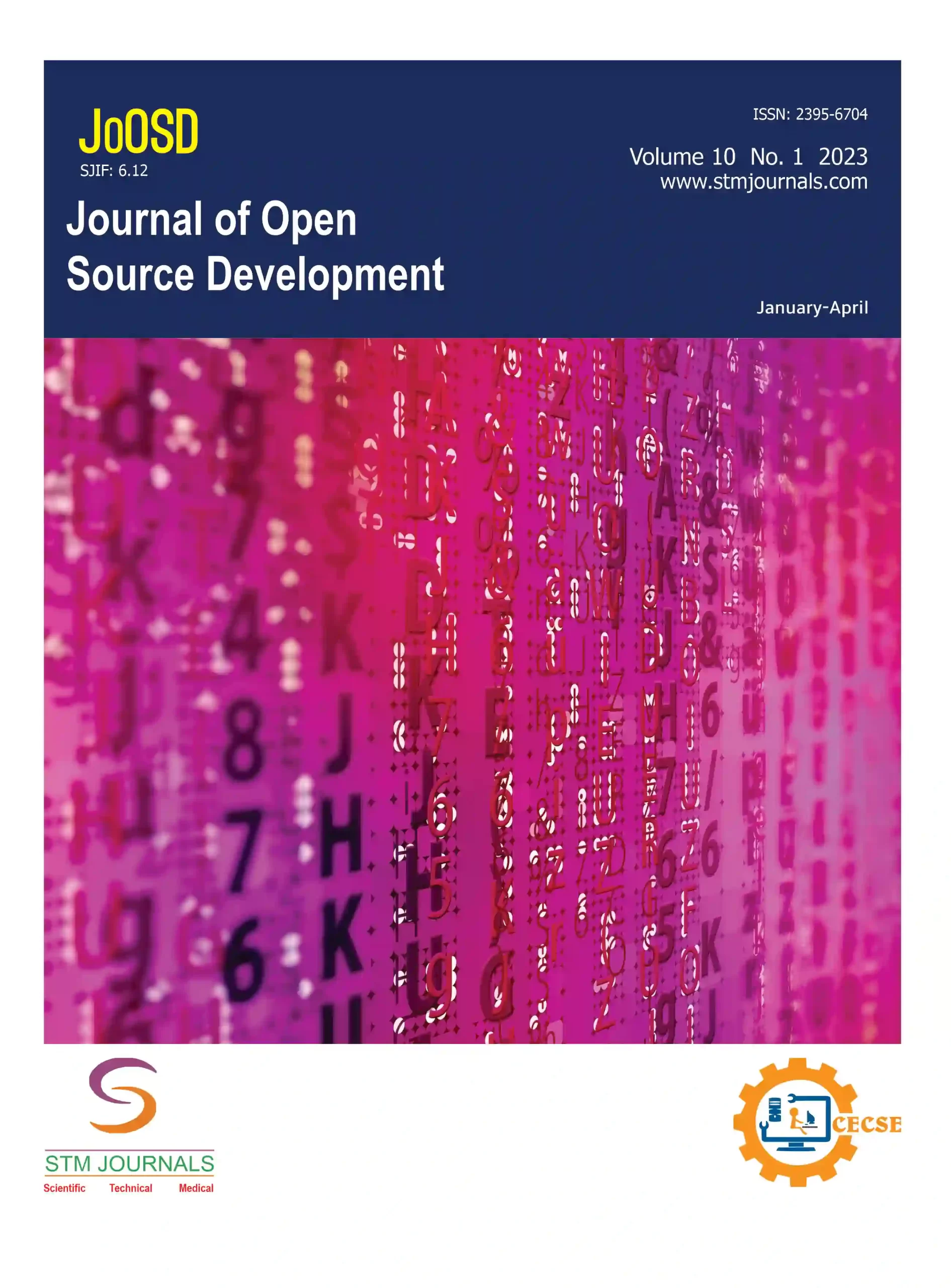[{“box”:0,”content”:”[if 992 equals=”Open Access”]
Open Access
n
[/if 992]n
n
n
n
n
- n t

n
Yashdeep Singh Maurya, Anurag Agarwal, Manogya Singh, Amit Karmakar
[/foreach]
n
n
n[if 2099 not_equal=”Yes”]n
- [foreach 286] [if 1175 not_equal=””]n t
- Student, Student, Student, Student, Department of Computer Science and Engineering, Shri Ram Murti Smarak College of Engg. and Technology, Bareilly, Department of Computer Science and Engineering, Shri Ram Murti Smarak College of Engg. and Technology, Bareilly, Department of Computer Science and Engineering, Shri Ram Murti Smarak College of Engg. and Technology, Bareilly, Department of Computer Science and Engineering, Shri Ram Murti Smarak College of Engg. and Technology, Bareilly, Uttar Pradesh, Uttar Pradesh, Uttar Pradesh, Uttar Pradesh, India, India, India, India
n[/if 1175][/foreach]
[/if 2099][if 2099 equals=”Yes”][/if 2099]nn
Abstract
nIn today’s educational landscape, managing attendance remains a central administrative task, often conducted manually on paper, consuming valuable time for educators. This project proposes a solution utilizing facial recognition technology to streamline the attendance process, thereby saving time and maintaining accurate student records.
The objective is to develop an automated attendance system that is minimally intrusive, cost-effective, and highly efficient, leveraging computer vision techniques and algorithms like Local Binary Patterns (LBP) implemented in Python. OpenCV libraries offer comprehensive functionality for operations such as face detection, training, and testing, facilitating seamless integration into the system.
The process involves two key components: face detection and face recognition. Initially, face detection identifies and captures the facial features of students, storing this data in a dataset. Subsequently, during attendance sessions, the system compares captured images with those in the dataset. Upon a match, attendance is automatically recorded, associating the student’s presence with the date and time in a CSV file.
By harnessing the power of facial recognition technology and advanced algorithms, this project aims to revolutionize attendance management in educational institutions, offering a faster, more accurate, and convenient alternative to traditional methods.
n
Keywords: LBP (Local binary pattern), OpenCV (Open-source computer vision library, CSV (Comma-separated values), Python, Attendance Automation
n[if 424 equals=”Regular Issue”][This article belongs to Journal of Open Source Developments(joosd)]
n
n
n
n
n
n
n[if 992 equals=”Open Access”] Full Text PDF Download[/if 992] nn
n[if 379 not_equal=””]nBrowse Figures
n
n
n[/if 379]n
References
n[if 1104 equals=””]n
- Kennedy Ok okpujie, Etinosa Noma Osaghae, Samuel John, Kalu-Anyah Grace, Imhade Okokpujie “A face Recognition Attendance system with GSM Notification” in IEEE NIGERICON 2017.
- Jenif D’Souza, Jothi S, Chandrasekar A, “Automated Attendance Marking and Management System by Facial recognition using Histogram” in ICACCS 2019.
- Nandhini R, Duraimurugan N, S.P Chollalingam “Face Recognition Attendance System” in IJEAT in 2019.
- Shreyak Sawhney, Karan Kacker, Samayak Jain, Shailendra Narayan, Rakesh Garg “Real Time Smart Attendance system using face recognition techniques “in international conference on cloud computing data science and engineering 2019.
- [E Varadharajan, R Dharani, S. Jeevitha, B Kavinmathi, S. Hemalatha “Automatic Attendance Management system using face detection” at ICGET 2016. Department of Information Technology.
- Poornima S, Sripriya N, Vijayalakshmi B, Vishnupriya P “Attendance monitoring system using facial recognition with audio output gender classification “in ICCCSP 2017.
- Omar Abdul Rhman Salim, Rashidha Olanrewaju, Wasiu Balogun “Class attendance management system using face recognition” in ICCCE 2018.
- Kritika Shrivastava, Shweta Manda, P.S Chavan, “Conceptual model for proficient automated attendance system based on face recognition and gender classification using Haar- cascade” in IJEAT 2018.
- Aruna katara, Sudesh V, Amar P, Nikhil D, Bhele, Chetan J “Attendance system Using face recognition and class monitoring system “in international journal on innovation and computing communication 2017.
- Soundarya S, Ashwini P, Patil SB. A review paper on attendance management system using face recognition. Int. J. Creat. Res. Thoughts. 2021;9:63-8.
nn[/if 1104][if 1104 not_equal=””]n
- [foreach 1102]n t
- [if 1106 equals=””], [/if 1106][if 1106 not_equal=””],[/if 1106]
n[/foreach]
n[/if 1104]
nn
nn[if 1114 equals=”Yes”]n
n[/if 1114]
n
n
n
| Volume | 11 | |
| [if 424 equals=”Regular Issue”]Issue[/if 424][if 424 equals=”Special Issue”]Special Issue[/if 424] [if 424 equals=”Conference”][/if 424] | 01 | |
| Received | April 3, 2024 | |
| Accepted | April 8, 2024 | |
| Published | April 15, 2024 |
n
n
n
n
n
nn function myFunction2() {n var x = document.getElementById(“browsefigure”);n if (x.style.display === “block”) {n x.style.display = “none”;n }n else { x.style.display = “Block”; }n }n document.querySelector(“.prevBtn”).addEventListener(“click”, () => {n changeSlides(-1);n });n document.querySelector(“.nextBtn”).addEventListener(“click”, () => {n changeSlides(1);n });n var slideIndex = 1;n showSlides(slideIndex);n function changeSlides(n) {n showSlides((slideIndex += n));n }n function currentSlide(n) {n showSlides((slideIndex = n));n }n function showSlides(n) {n var i;n var slides = document.getElementsByClassName(“Slide”);n var dots = document.getElementsByClassName(“Navdot”);n if (n > slides.length) { slideIndex = 1; }n if (n (item.style.display = “none”));n Array.from(dots).forEach(n item => (item.className = item.className.replace(” selected”, “”))n );n slides[slideIndex – 1].style.display = “block”;n dots[slideIndex – 1].className += ” selected”;n }n”}]


